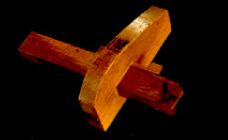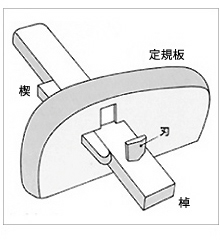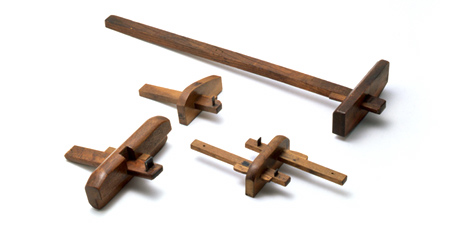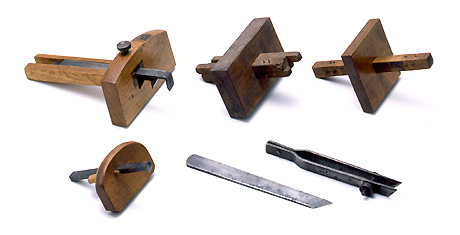Marking Gauge [kebiki]
Kebiki
Kebiki

Marking Gauge is a tool that draws lines on the surface of flat wood. It is a tool in which a thin rod is inserted into a Ruler board and a Marking Gauge blade is attached to the line at the end of this rod. By sliding the Ruler board along the side of the board, the Marking Gauge blade at the tip of the rod makes a line on the surface. Since it has a thinner line than the ink line, it is used for precise finishing. Marking Gauge can be broadly divided into two types: "Streak Marking Gauge," which marks the line, and "Swari Marking Gauge," which breaks the thin plate directly with a Marking Gauge blade. "Wari Marking Gauge" is a slightly larger Marking Gauge.

The streak Marking Gauge is used to draw lines parallel to the reference surface. Depending on the type of work and the type of work, there are two-bonsuji Marking Gauge and Nagasao Marking Gauge. The two rods Marking Gauge can use two rods on both sides of a single Ruler board. The two types of lines can be ruled in one Marking Gauge, such as the blade of one rod, the instep of the instep is attached, the Ruler board is turned over, and the other blade is attached to the other. Nagasao Marking Gauge is a long pole in order to draw a line on a wide slope.

From the left: Marking Gauge, Suji Marking Gauge, Nibonsuji Marking Gauge, Nagasao Marking Gauge
The Marking Gauge is made slightly larger and sturdy than the streak Marking Gauge, and is used when grinding thin plate materials.
Kama Marking Gauge, unlike Marking Gauge and split Marking Gauge, has two L-shaped Marking Gauge blades. Slide the long L-shaped part on the rod to adjust the width and fasten it with screws. In Marking Gauge, the rod at the tip of the Marking Gauge blade is disturbed.
The chisel Marking Gauge was planted with a ruled nail instead of a Marking Gauge blade in a square cross-sectional camphor. There are several poles, such as two or four. It can be used to determine the width of handle holes and grooves, and at the same time draw many lines. It is often used in the work of fittings and fingers.
The white paper is used to draw accurate lines on a member using curves or windings. It is often used in work such as fittings and finger objects. There is also a two-cho white paper that draws two parallel lines.

From the back left, Kama Marking Gauge, Chisel Marking Gauge (four rods), Chisel Marking Gauge (one rod) From the left, Kama Marking Gauge single blade, white paper, two white paper
Special Exhibition
Permanent exhibition